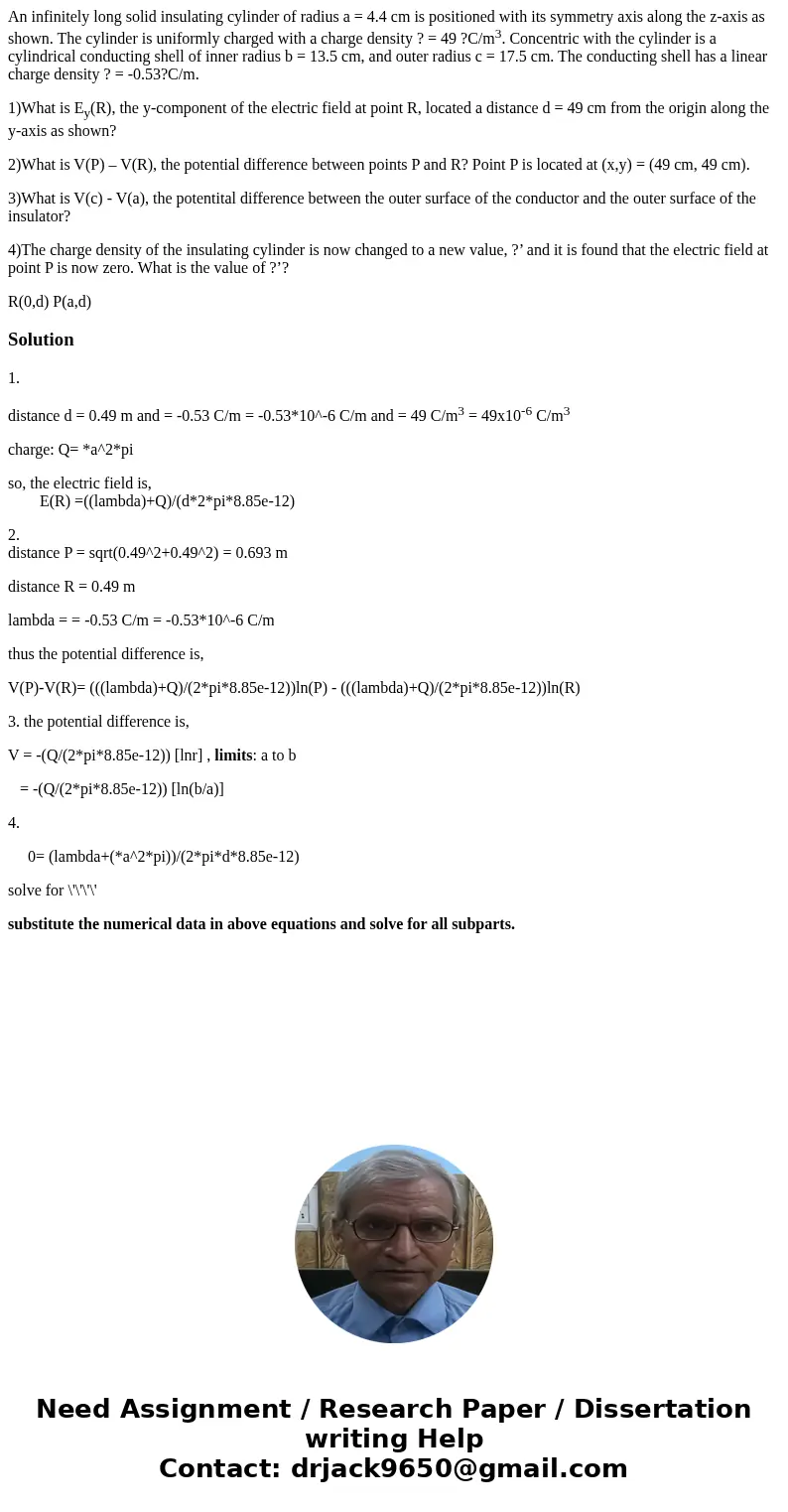An infinitely long solid insulating cylinder of radius a 44
An infinitely long solid insulating cylinder of radius a = 4.4 cm is positioned with its symmetry axis along the z-axis as shown. The cylinder is uniformly charged with a charge density ? = 49 ?C/m3. Concentric with the cylinder is a cylindrical conducting shell of inner radius b = 13.5 cm, and outer radius c = 17.5 cm. The conducting shell has a linear charge density ? = -0.53?C/m.
1)What is Ey(R), the y-component of the electric field at point R, located a distance d = 49 cm from the origin along the y-axis as shown?
2)What is V(P) – V(R), the potential difference between points P and R? Point P is located at (x,y) = (49 cm, 49 cm).
3)What is V(c) - V(a), the potentital difference between the outer surface of the conductor and the outer surface of the insulator?
4)The charge density of the insulating cylinder is now changed to a new value, ?’ and it is found that the electric field at point P is now zero. What is the value of ?’?
R(0,d) P(a,d)Solution
1.
distance d = 0.49 m and = -0.53 C/m = -0.53*10^-6 C/m and = 49 C/m3 = 49x10-6 C/m3
charge: Q= *a^2*pi
so, the electric field is,
E(R) =((lambda)+Q)/(d*2*pi*8.85e-12)
2.
distance P = sqrt(0.49^2+0.49^2) = 0.693 m
distance R = 0.49 m
lambda = = -0.53 C/m = -0.53*10^-6 C/m
thus the potential difference is,
V(P)-V(R)= (((lambda)+Q)/(2*pi*8.85e-12))ln(P) - (((lambda)+Q)/(2*pi*8.85e-12))ln(R)
3. the potential difference is,
V = -(Q/(2*pi*8.85e-12)) [lnr] , limits: a to b
= -(Q/(2*pi*8.85e-12)) [ln(b/a)]
4.
0= (lambda+(*a^2*pi))/(2*pi*d*8.85e-12)
solve for \'\'\'\'
substitute the numerical data in above equations and solve for all subparts.

 Homework Sourse
Homework Sourse